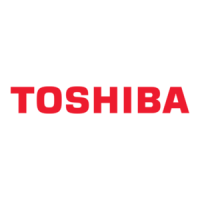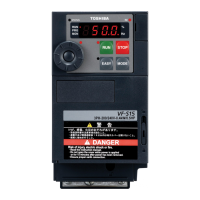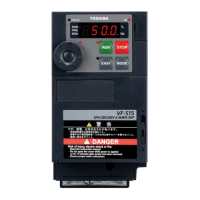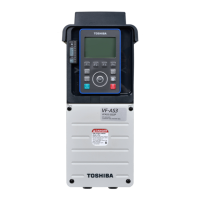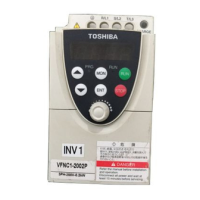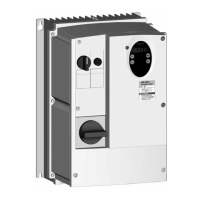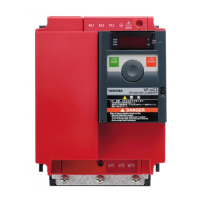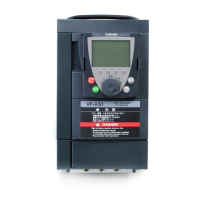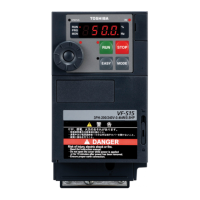E6581386
D-1
4
4. Searching and setting parameters
There are two types of setting mode quick mode and standard setting mode.
Quick mode : EASY key: ON
Eight frequently used basic parameters are just displayed
(Factory default position).
Quick mode (EASY)
Title Function
Automatic function setting
V/f control mode selection
Maximum frequency
Acceleration time 1
Deceleration time 1
Motor electronic thermal protection level 1
FM terminal meter adjustment
Registered parameter display selection
Parameters you selected can be displayed by changing
the parameter. (Up to 32 parameters)
Standard setting mode : EASY key: OFF
Both basic and extended all parameters are displayed.
Basic parameters : This parameter is a basic parameter for the
operation of the inverter.
⇒ For details of basic parameters, refer to Section 5.
⇒ For parameter settings, refer to Section 11.
Extended parameters :The parameters for detailed and special
setting.
⇒ For details of extended parameters, refer to Section 6.
⇒ For parameter settings, refer to Section 11.
For reasons of safety, the following parameters have been set up so that they cannot be reprogrammed while the
inverter is running.
[Basic parameters]
(Automatic acceleration/deceleration)
(Automatic torque boost)
(Automatic function setting)
(Command mode selection)
(Frequency setting mode selection 1)
(V/f control mode selection)
(Base frequency 1)
(Base frequency voltage 1)
(Maximum frequency)
(Auto-restart control selection)
(Regenerative power ride-through control)
(Dynamic braking selection)
(Dynamic braking resistance)
(Allowable continuous braking resistance)
(Factory default setting)
⇒ To write-protect extended parameters during operation, refer to Section 11.
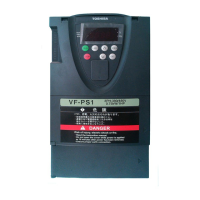
